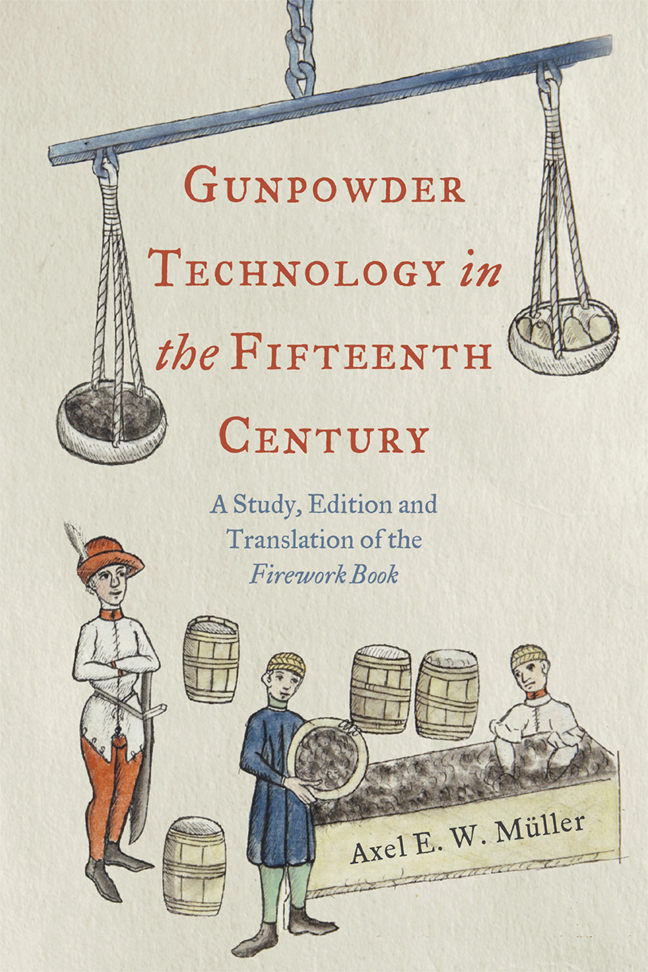 Gunpowder Technology in the Fifteenth Century
Gunpowder Technology in the Fifteenth Century Published online by Cambridge University Press: 21 February 2024
Editorial Principles
This chapter provides the text and a translation into English of the Royal Armouries manuscript I.34. It is integral to the understanding of the Firework Book tradition and I.34's position within it, that the edition and translation are placed in the centre of this book. Only after providing a complete translation is it possible to analyse the content of the Firework Book in detail. Before the edition and translation it is important to set out my key editorial principles.
Transcription
In transcribing and translating the Firework Book I have tried to replicate the text as it appears in the manuscript. Since no facsimile of the original exists, I have reproduced the transcript of the text according to the principles of the discipline known as Diplomatics, by representing everything as it can be found in the manuscript. The guiding principle of the transcription is to remain faithful to the original, with the intention of providing all the core elements of the original manuscript.
The transcription aims to make the German text as accessible as possible for a reader who is familiar with modern New High German. However, the spelling of the words is taken as in the manuscript and has not been harmonized, in order to enable scholars to observe any linguistically specific features.
The decision was made to retain the page layout of the manuscript text line by line, with any words that were carried over the line allowed to remain. Hyphenation has been included where it is provided in the manuscript.
When obvious scribal errors occur, they are marked in the transcription. Scribal errors, such as word or line repetitions have been included, as have crossings out.
By way of convention, the following rules are observed throughout: vowels v and j are retained and have not been converted to u and i, resulting in, e.g., ‘vnd’ and not ‘und’.
The two colours of the manuscript text are represented in bold for red, and non-bold for brown. Enlarged initials are reproduced in a larger font, but standardized – which is not the case in the manuscript.
Going beyond the diplomatic edition, abbreviations are expanded, added in the text in italics and placed in square brackets.
Diacritic marks have been reproduced, often indicating a lengthening of a vowel, but only when it is clear that they are actual characters and not a scribal oversight or a slip of the pen.
To save this book to your Kindle, first ensure no-reply@cambridge.org is added to your Approved Personal Document E-mail List under your Personal Document Settings on the Manage Your Content and Devices page of your Amazon account. Then enter the ‘name’ part of your Kindle email address below. Find out more about saving to your Kindle.
Note you can select to save to either the @free.kindle.com or @kindle.com variations. ‘@free.kindle.com’ emails are free but can only be saved to your device when it is connected to wi-fi. ‘@kindle.com’ emails can be delivered even when you are not connected to wi-fi, but note that service fees apply.
Find out more about the Kindle Personal Document Service.
To save content items to your account, please confirm that you agree to abide by our usage policies. If this is the first time you use this feature, you will be asked to authorise Cambridge Core to connect with your account. Find out more about saving content to Dropbox.
To save content items to your account, please confirm that you agree to abide by our usage policies. If this is the first time you use this feature, you will be asked to authorise Cambridge Core to connect with your account. Find out more about saving content to Google Drive.